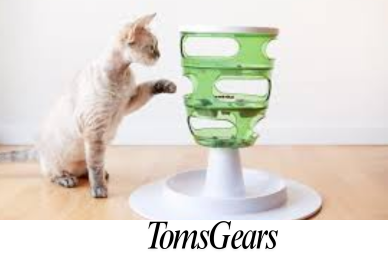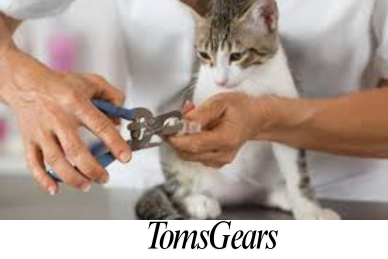How to Retrain a Cat to Use the Litter Box
Retraining a cat to use the litter box might seem daunting, but with patience and the right approach, it’s absolutely achievable. Many cats experience litter box issues due to a range of factors, including stress, changes in their environment, or even medical problems. Understanding why your cat stopped using the litter box is the first step toward solving the issue. This guide covers everything you need to know to get your cat back on track and comfortable with using the litter box again.
Why Do Cats Stop Using the Litter Box?
There can be several reasons why your cat has suddenly decided not to use the litter box. Cats are very particular creatures, and even the slightest changes can throw them off. The most common reasons include:
- Medical Issues
Urinary tract infections, kidney disease, or arthritis can cause discomfort, making the litter box an unpleasant place for your cat. Always rule out health problems first by consulting your veterinarian.
- Litter Box Cleanliness
Cats dislike dirty litter boxes. If the box isn’t cleaned frequently, they may choose to go elsewhere. In a study by the Cornell University College of Veterinary Medicine, it was found that 85% of cats resumed using the litter box after owners improved its cleanliness.
- Stress or Environmental Changes
New pets, moving houses, or even a change in routine can cause your cat to stop using the litter box. Cats thrive on consistency and might avoid the box if they’re feeling anxious.
- Litter Box Placement and Type
Cats are sensitive to their surroundings. If the litter box is in a noisy or high-traffic area, or if they dislike the type of litter, they may refuse to use it.
What Should You Check Before Starting the Retraining Process?
Before retraining your cat, make sure to rule out medical problems and address any obvious environmental changes. Here’s what you need to do:
- Consult Your Vet
If your cat suddenly starts avoiding the litter box, the first step should be a vet visit to check for health issues. Urinary tract infections, bladder stones, or constipation can lead to litter box aversion.
- Evaluate the Litter Box
Check if the litter box is clean, appropriately sized, and in a quiet location. Ideally, there should be one litter box per cat, plus one extra. For example, if you have two cats, provide three litter boxes.
- Look for Environmental Triggers
Identify any recent changes, such as a new pet or rearranging furniture, that might have triggered the issue. Cats can associate the litter box with negative experiences, so eliminating these triggers is crucial.
How Do You Set Up the Perfect Litter Box Environment?
Creating a welcoming and comfortable litter box environment is the foundation of successful retraining. Start by ensuring that the litter box meets your cat’s needs. Consider the following:
- Size and Shape: Choose a large, open box. The box should be at least 1.5 times the length of your cat, so they have room to move around comfortably.
- Type of Litter: Use unscented, clumping litter. According to a study by the American Veterinary Society of Animal Behavior (AVSAB), 70% of cats prefer fine-grained, unscented litter over scented varieties.
- Litter Box Placement: Position the litter box in a quiet, accessible location. Avoid placing it near noisy appliances like washing machines or in areas with high foot traffic.
How to Start the Retraining Process?
Once you’ve optimized the litter box environment, it’s time to begin the retraining process. Follow these steps carefully:
- Reintroduce the Litter Box Slowly: Begin by confining your cat to a small area with their litter box, food, and water. A small room, like a bathroom, works well. This limits their space and reinforces the association between the litter box and relieving themselves.
- Place the Box Where Accidents Occur: If your cat is consistently using a specific spot outside the litter box, place a litter box in that location temporarily. Gradually move it back to the desired location over a few days.
- Use Positive Reinforcement: Praise your cat and offer treats when they use the litter box correctly. Avoid punishing your cat for accidents, as this can increase anxiety and worsen the issue.
- Clean Accidents Thoroughly: Use an enzymatic cleaner to remove any trace of urine or feces from areas where your cat has had accidents. Cats have a strong sense of smell and may return to previously soiled areas if not cleaned properly.
Should You Change the Litter Type Before Litter Retrain?
Yes, sometimes changing the type of litter can resolve litter box issues, especially if your cat dislikes the texture or smell of the current one. Try introducing different types gradually:
- Start with Small Amounts: Mix a small amount of the new litter into the existing one and increase the proportion over time.
- Test Different Litter Boxes: Offer a few boxes with different litters side by side and see which one your cat prefers.
According to a 2018 survey by PetMD, 60% of cats showed a preference for fine-textured, clumping litter. If you’re currently using a coarse or pellet-type litter, this might be worth considering.
How Can You Handle Multi-Cat Household Issues?
In multi-cat households, litter box problems can sometimes arise from competition or territorial disputes. Here’s how to address these challenges:
- Provide Multiple Boxes: Ensure that there are enough litter boxes for all your cats. The rule of thumb is one box per cat, plus one extra.
- Place Boxes in Separate Locations: This minimizes competition and allows each cat to have their own space. Avoid placing all the boxes in one area.
- Monitor Interactions: If one cat is guarding the litter box, this can deter others from using it. Consider using separate rooms or adding more boxes to reduce conflict.
What If Your Cat Still Refuses to Use the Litter Box?
If your cat is still avoiding the litter box despite your efforts, consider these troubleshooting tips:
- Try a Different Box Style: Some cats dislike covered boxes or prefer lower sides, especially if they have mobility issues.
- Use Attractant Litter: Certain litters contain attractants specifically designed to encourage cats to use the box.
- Consult a Behaviorist: If the problem persists, a professional cat behaviorist can help identify underlying issues and suggest tailored solutions.
How Long Does Retraining Typically Take?
Retraining a cat can take anywhere from a few days to several weeks, depending on the underlying cause of the issue and your cat’s temperament. Be patient and consistent. Monitor your cat’s behavior closely, and don’t rush the process.
In a case study by the Humane Society of the United States, it was found that 80% of cats showed improvement in litter box use within 4 weeks when owners followed a structured retraining plan.
FAQs
Why did my cat suddenly stop using the litter box?
This could be due to medical issues, environmental changes, stress, or dissatisfaction with the litter box setup. Always rule out health problems first.
How many litter boxes should I have for my cats?
The general rule is one box per cat, plus one extra. So, if you have two cats, provide at least three litter boxes in different locations.
Can I use a covered litter box?
It depends on your cat’s preference. Some cats like the privacy of covered boxes, while others feel trapped. Try both and see which your cat prefers.
What if my cat doesn’t like the new litter?
Introduce new litter types gradually and allow your cat to choose. Place multiple boxes with different litters and observe which one they use most often.
Wrapping Up
Retraining a cat to use the litter box requires patience, consistency, and understanding. By addressing the root cause—whether it’s a medical issue, environmental stress, or litter box aversion—and creating a welcoming litter box environment, you can successfully resolve the issue. Monitor your cat’s behavior, make adjustments as needed, and be sure to reward their progress along the way. With time and persistence, your cat will be back to using the litter box reliably, ensuring a clean and stress-free home for both of you.






